Rúben Amorim’s Preferred Formation
This analysis delves into how new Manchester United manager Rúben Amorim’s formation set up out of possession when operating with a back five at Sporting CP.
We also have a tactical video breaking down Ruben Amorium’s tactics at Sporting CP if you are interested.
Under Rúben Amorim’s coaching style, Sporting CP combines some typical defensive patterns within this system along with a fluid structure where they seek to defend specific spaces on the pitch, rather than each player having an individual role.
Playing with a back-five allows a team’s defence to be slightly cavalier, with their defenders pushing up out of the backline to press an opponent.
Some teams will use the back five to cover most, if not all, of the pitch’s width, with the wing-backs pressing the wide areas and allowing a midfield three or four to stay centrally compact.
Sporting Head Coach Ruben Amorim indeed uses his wing-backs to press wide areas but sets up in a unique 5-2-3, with an initially very compact and reserved back five, as we can see in the following image.
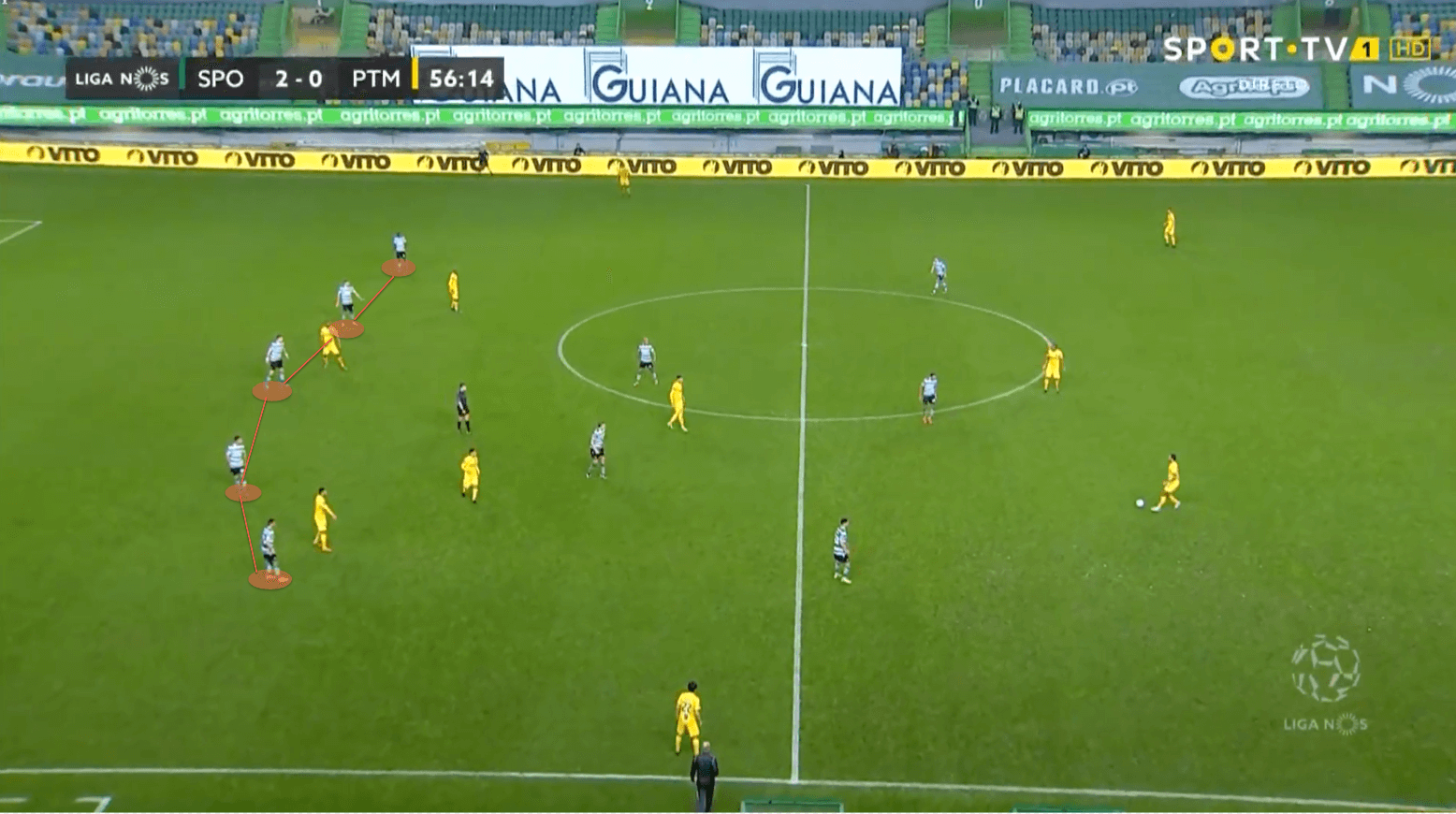
Some coaches might initially feel uneasy about playing with two central midfielders and pressing with a front three alongside this compact back five.
This tactical analysis will highlight the subtleties within this system that make it work so well.
Sporting has the best defensive record in Liga NOS this season (2021), having just conceded 12 league goals at the time of writing.
The alternatives
A lot depends on the system.
Some teams play with a 5-3-2 or a 5-4-1.
It’s very rare to see the 5-2-3 that Sporting uses.
One of the more well-known midfield threes with a back five comes from Antonio Conte’s sides over the years.
Generally, Conte initially has his central midfielders press the wide areas, allowing the wingback to stay in place and preventing the ball from entering behind.
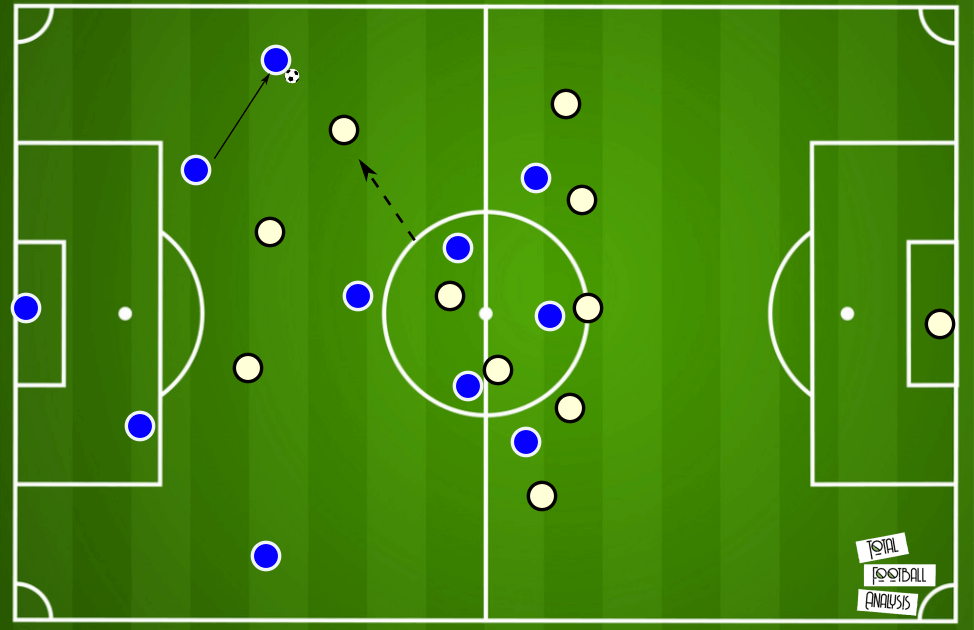
But if the opponent switches possession, it’s not realistic to expect a midfield three to continuously switch from side to side and maintain an intense press while also remaining centrally compact.
As the switch occurs, the wing-back on the other side can then push up to press, allowing the midfield three times to switch across.
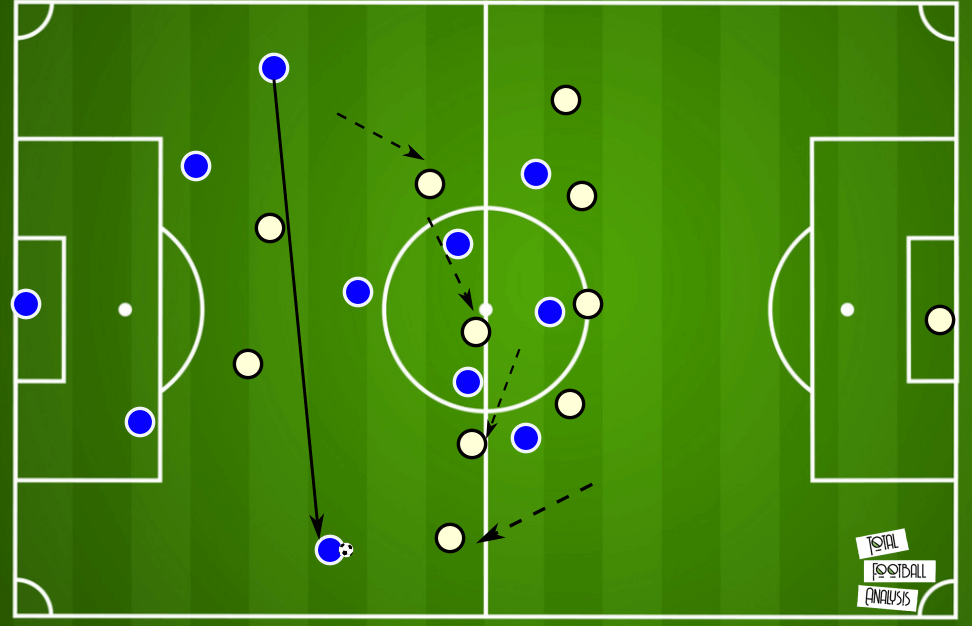
In addition, we often see teams play with a midfield four sitting in front of the back five.
This could be a makeshift four with one or two forwards dropping into the midfield to give a solid midfield base.
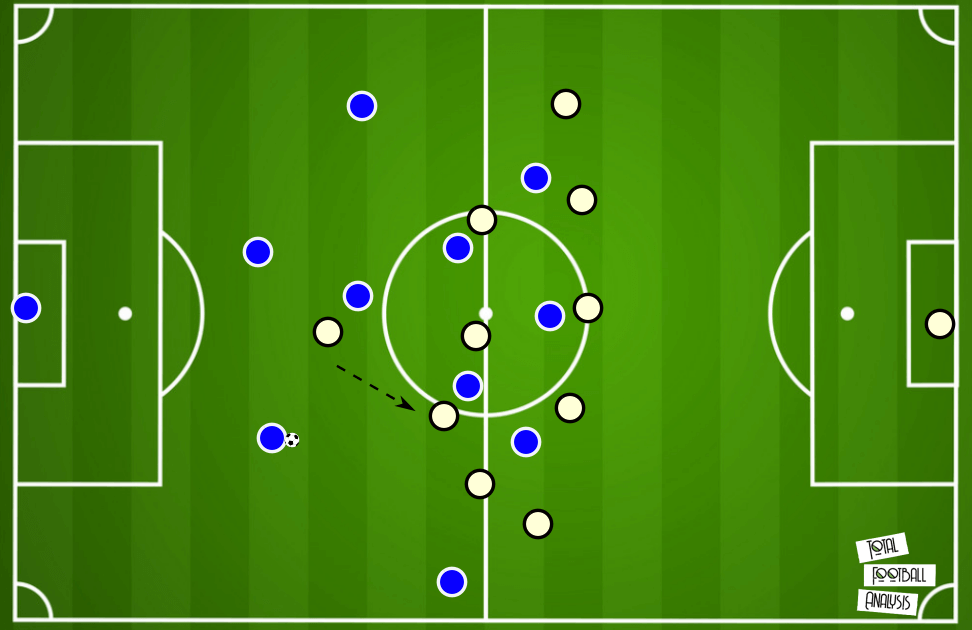
There’s no set way to press wide areas in this set-up.
Some coaches will use the midfield four to keep the opposition’s centre of the pitch unattainable.
They will have the wing-backs push up to press the wide areas and allow the midfield to stay central.
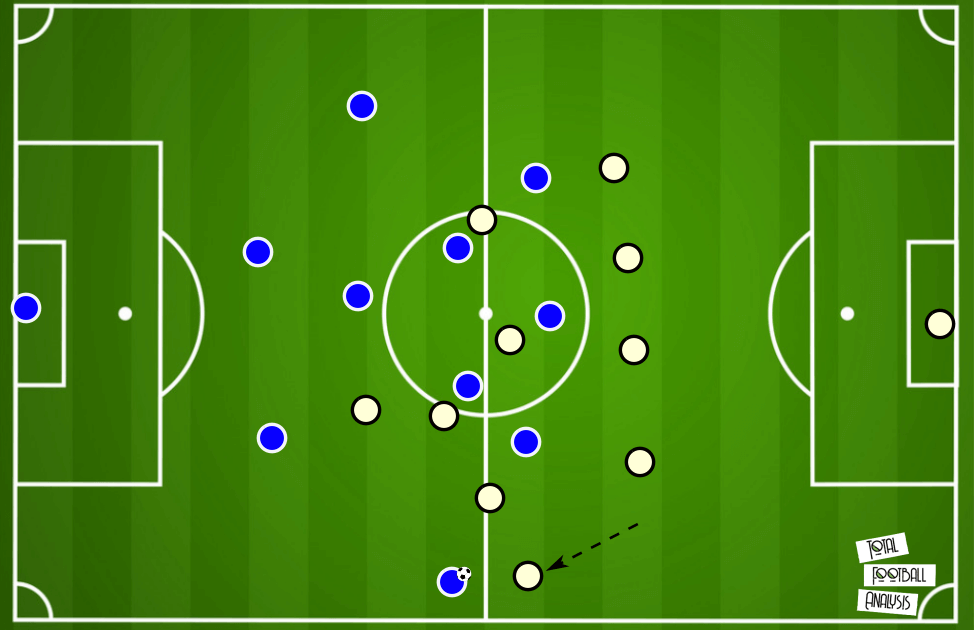
Others will have the midfielders press the wide areas and again allow the wing-backs to stay back.
What is most common, however, is for the wide midfielders to press the opposition full-backs if the opponent beats the first line of the press.
But as the ball advances further inside the defensive team’s half, the wing-backs might push forward to press.
The midfield stays compact centrally to prevent any central passage for the opposition and force them to either attempt to beat the wing-back and play down the line or recycle possession.
And so we come to Amorim’s set-up – a 5-2-3.
Yet, rather than focusing on the formation, it’s more pertinent to analyse their pressing principles and how they plan to structure their success at this moment in the game.
Sporting CP Overall shape and fluidity
Under Rúben Amorim tactics, Sporting operates with a defined back five, a front three, and a midfield two.
While there may be some distance between the lines in many instances, they are nevertheless interwoven to ensure certain areas of the pitch are protected and pressed.
Sporting does a terrific job of maintaining space occupation during the pressing phase.
Poor pressing teams will leave space behind when they press, but Sporting’s players have an excellent understanding of where space could potentially be created.
Having seven players behind the front three gives them a strong foundation for having players drop in when needed.
If the press is broken, and one of the central midfielders pushes out of the double pivot to press, then one of the forwards can drop in to fill the space.
If the play is focused down one side, one of the forwards will follow it wide.
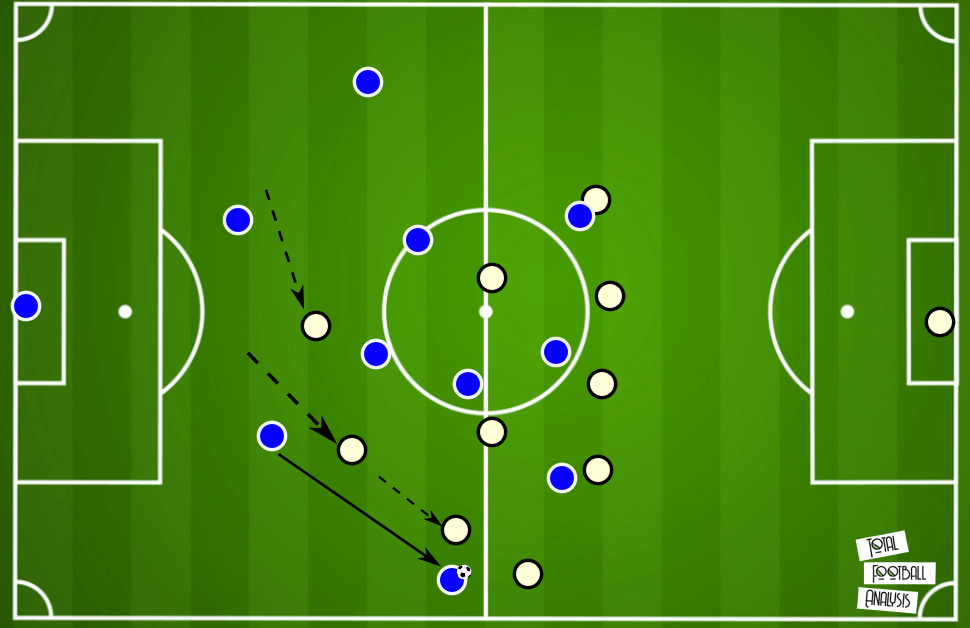
In these instances, the opposition might look to circulate possession and work the ball to the other flank.
Sporting’s “front five” will simply rotate, with the now ball-near pivot shifting out to press the wing and the wide forward tucking into midfield.
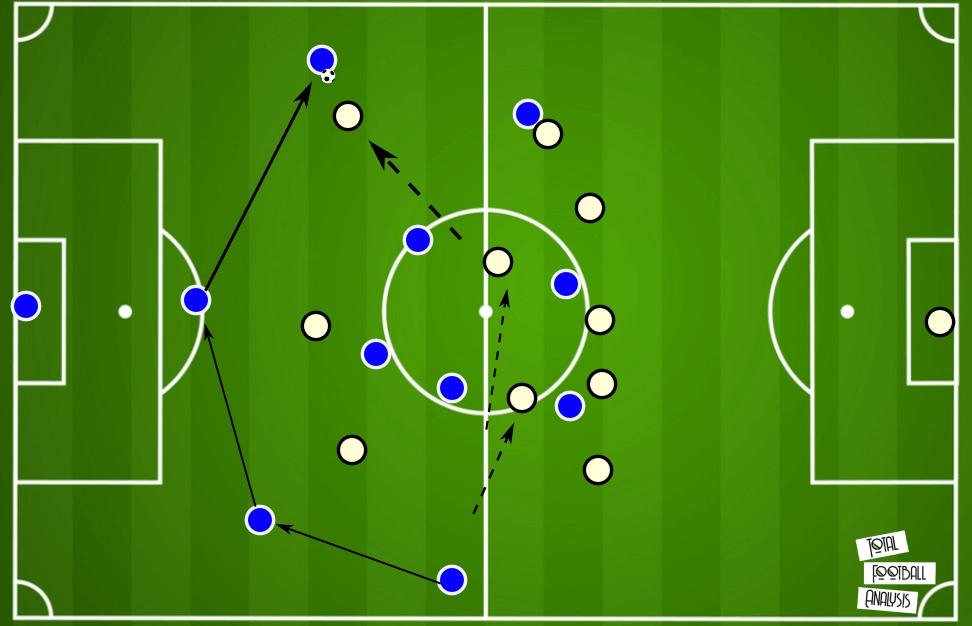
From goal kicks, they start with a pretty large gap between their front three and the rest of the team.
Sporting has quick, mobile players who do an excellent job of creating an aggressive second line of press when needed.
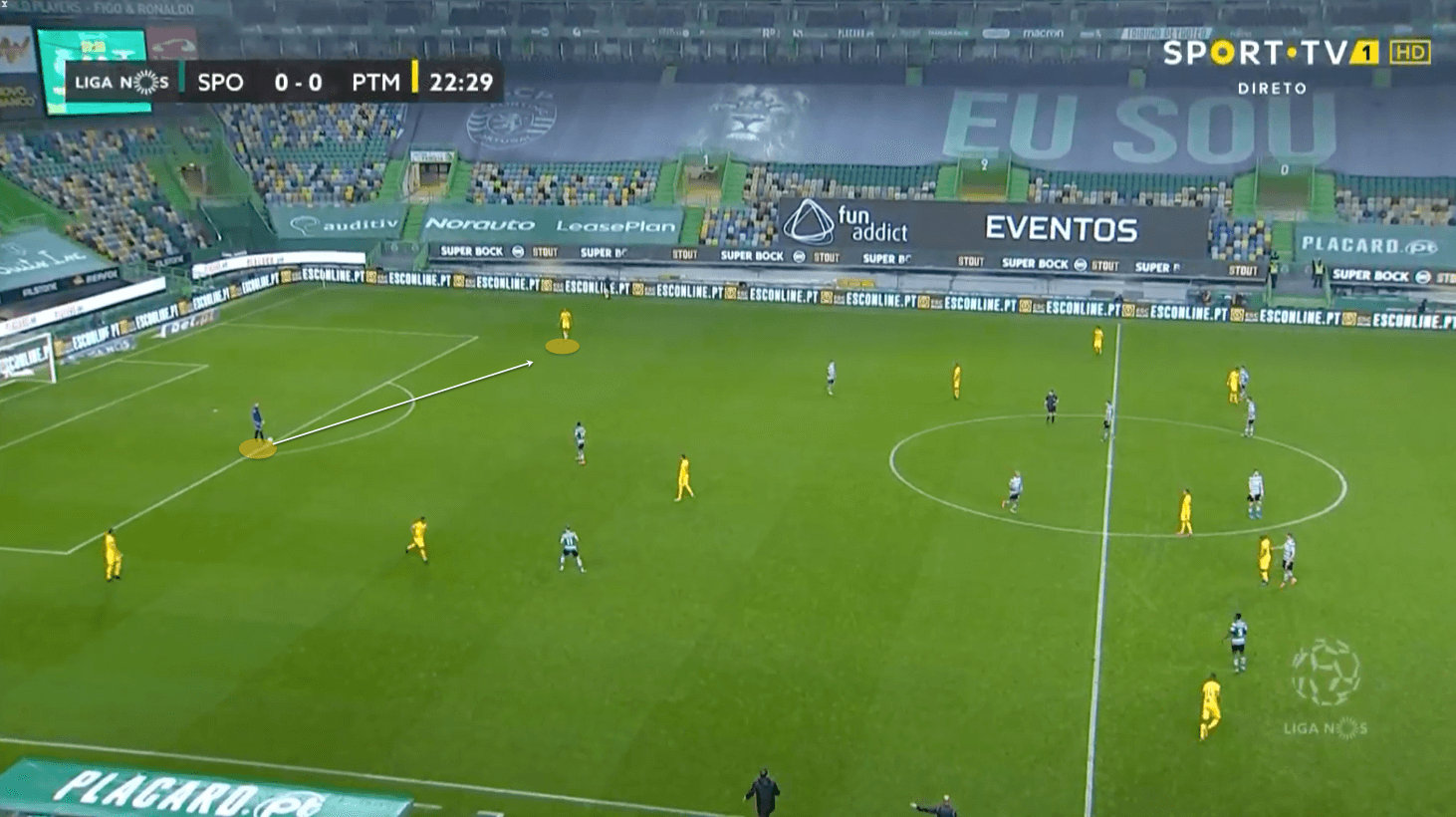
When the ball is played wide, as in the previous image, they ensure the first line of the press is supported, and the opponent doesn’t have an easy, short passing option beyond the pressing player.
In the following image, we can see how quickly the right wing-back pushes up, as does the ball-side central midfielder, to ensure the opposition doesn’t comfortably possess the ball.
Amorim also wants his backline to remain compact, which we will look at later.
Still, to ensure they can stay relatively deep, the far-side pivot is already shifting across to cover the space between the backline and the second line of the press.
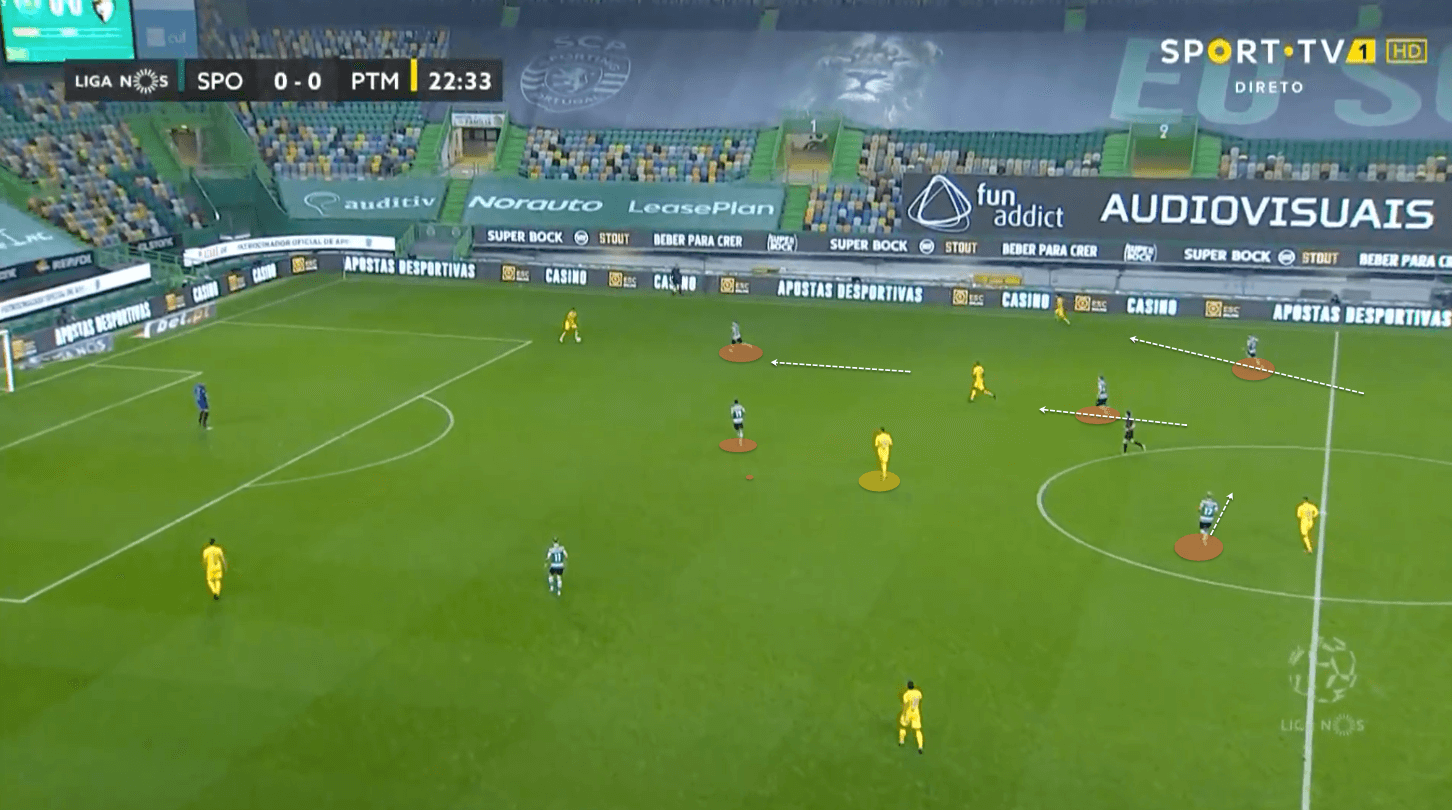
As the ball is played into the opposition full-back, Sporting’s aggressive shape well covers any immediate short passing options.
They opt to play down the line, where Sporting can commit one of their three centre-backs to man-marking the striker and still maintain a strong back three, thanks to the left-wing-back tucking around.
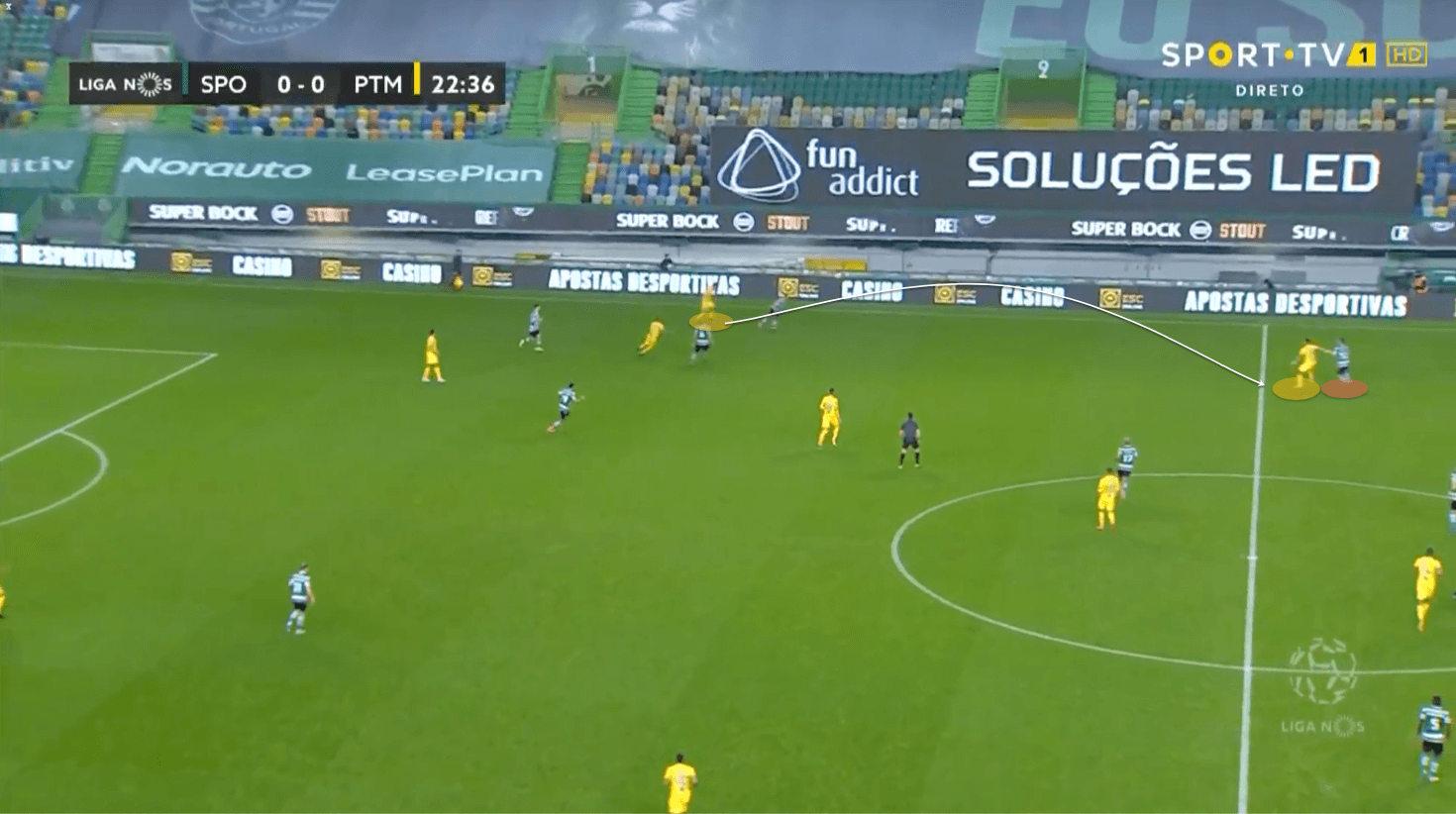
At no point during the opposition’s build-up does Sporting allow them time and space to play past the press.
Everything is focused on forcing them to make poor decisions on the ball and either making a mistake inside their own half, which Sporting can capitalize on or playing the ball long, where Sporting can begin their patient possession game.
Closing off passing options
Sporting’s front three press the entirety of the opposition backline, working as a unit and preferably filtering the opposition down either flank.
To do this, they remain narrow, which shows them away from the centre of the pitch.
The remit of the front three is to prevent easy central passage for the opposition and then show them wide before closing out any passing options.
Sporting then looks to commit players to these wide areas where they can overload the opposition and subsequently secure possession on transition.
In the following image, we can see that as the opposition plays out wide, the ball-near wide forward shifts across and shows the player down the line.
This move is followed by Sporting’s right wing-back shifting across and forwards to pick up the winger in support, whilst the ball-near pivot shifts across, too.
This pattern can be seen in the following image, where the far-side pivot begins to move across to fill the central space.

Finally, the right-sided centre-back shifts, too, and four Sporting players surround three opposition players.
Due to the pressure and positioning of the Sporting players, the ball carrier is trapped and gives away possession.
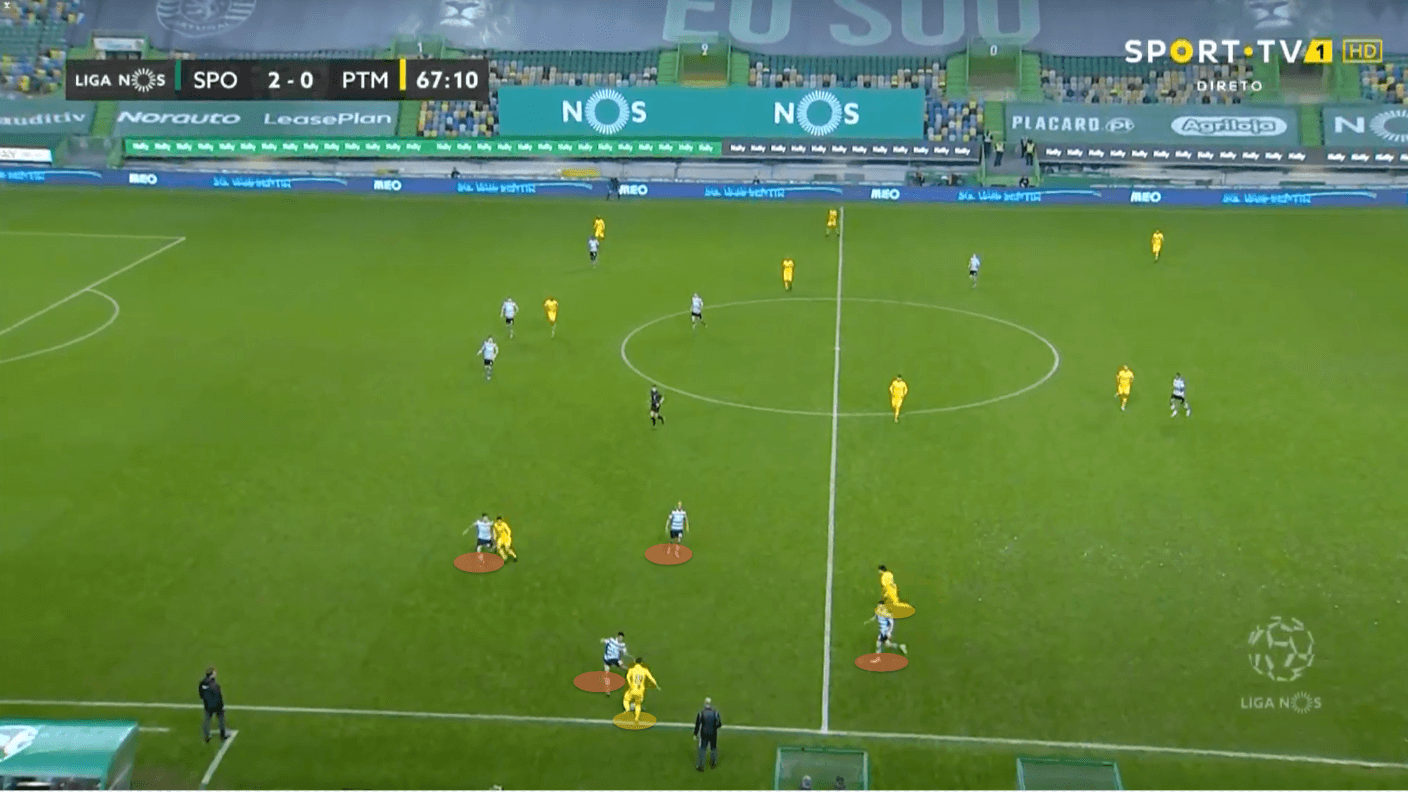
When the ball is turned over, these four players can combine or simply find the free player in the 4 v 3 to play out, as we can see in the following image.
It should also be noted that there are two Sporting forwards left in a 2v2 with the opposition centre-backs.
A quick break in this scenario creates an excellent counter-attacking opportunity.
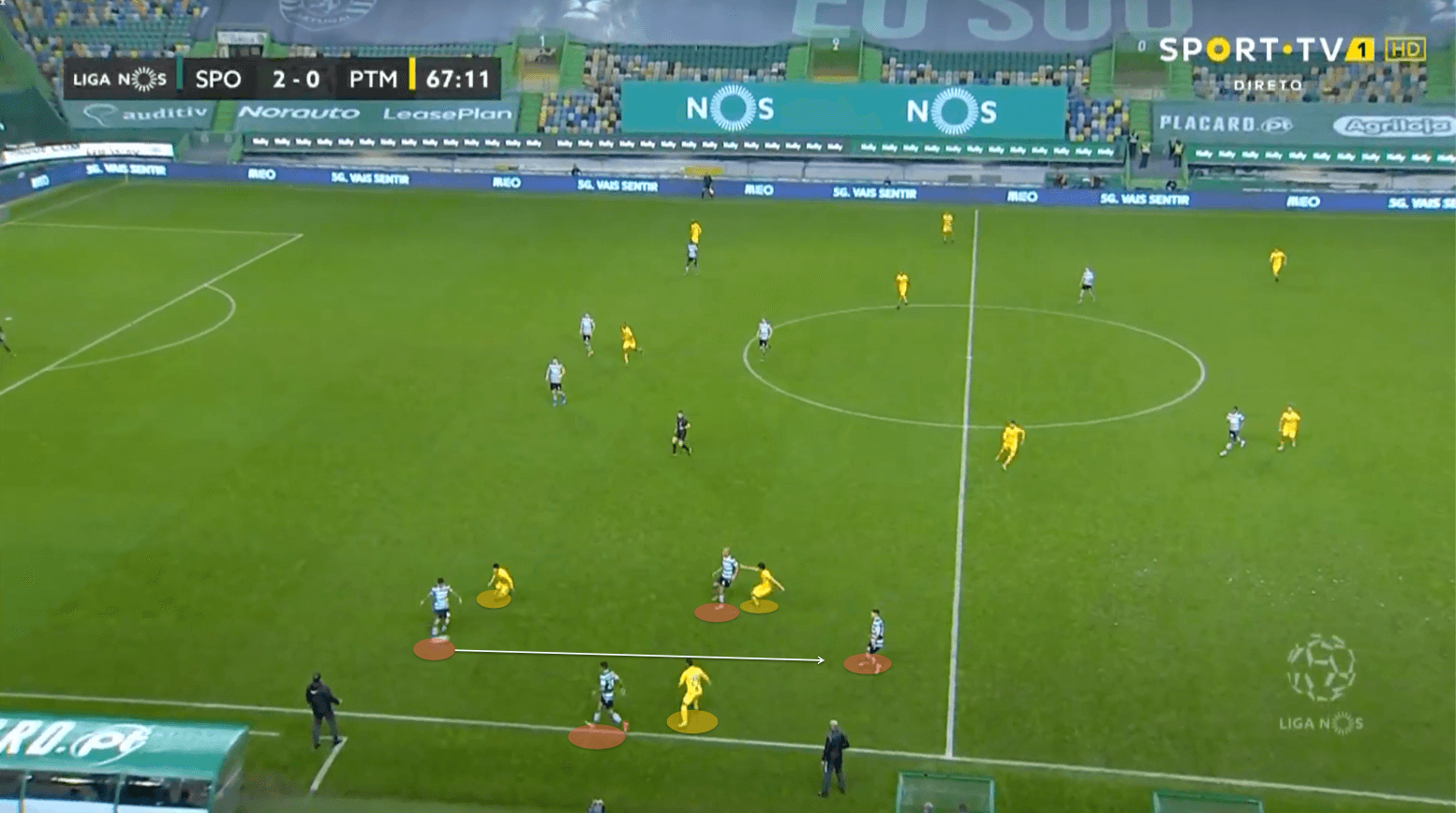
Preventing space for the pivot
While the front three aim to push the opponent wide, the double pivot must be ready to react.
They initially start deep, giving Sporting fantastic protection against any long balls forward.
Still, they also need to be ready to move laterally across the pitch to create the kinds of patterns shown previously.
However, they have to be ready to push up to cover the opposition pivot as well.
Sporting’s front three will initially cover the pivot with their cover shadow.
However, Sporting’s pivots are ready to cover this space quickly.
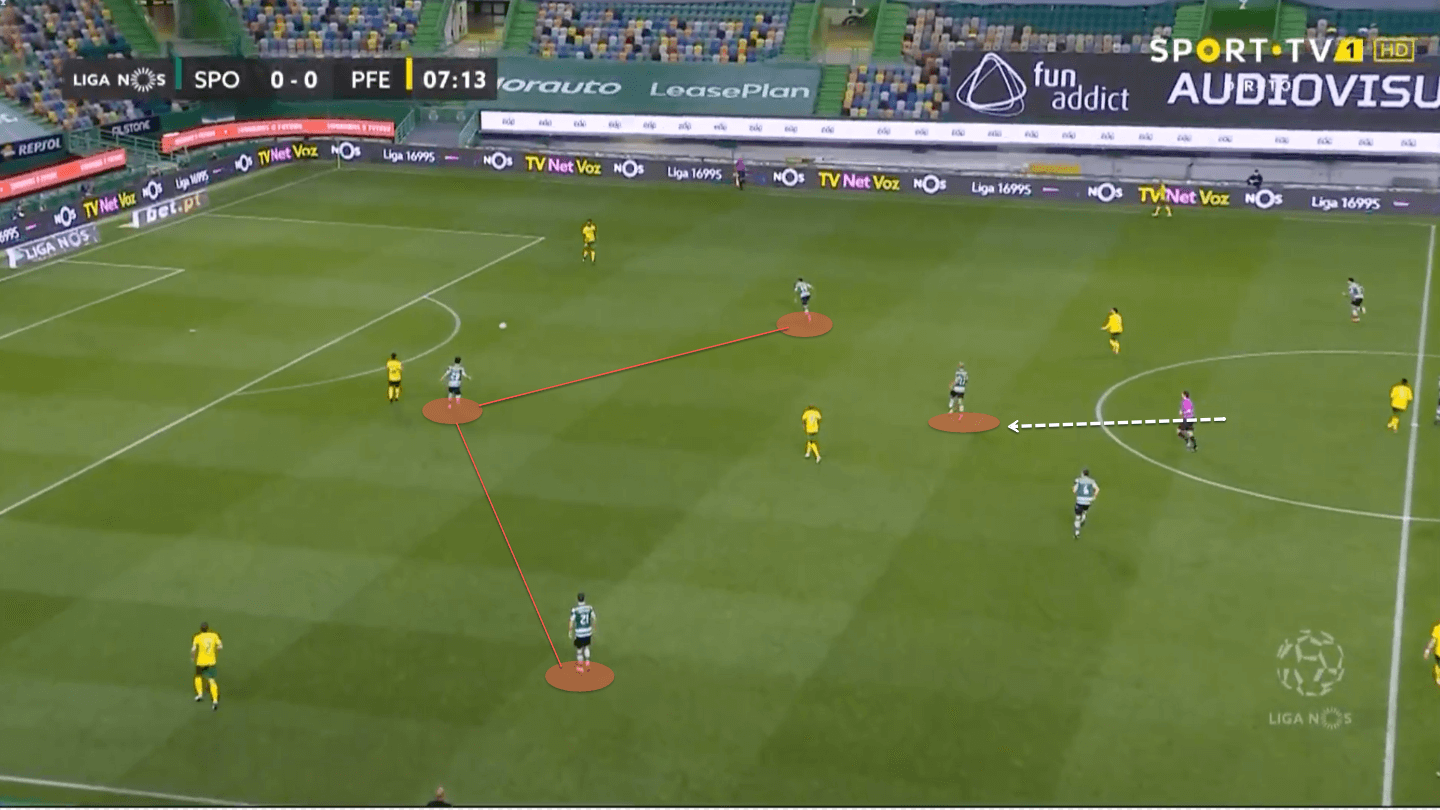
When this happens, Amorim wants to maintain protection in the centre of the pitch.
Similar to how the three forwards and double pivot work in tandem to fill gaps when Sporting press, Amorim’s side does likewise to cover the opposition pivot.
Depending on the ball’s location, one of the defenders will drop in to cover the pivot as it pushes forward.
If the ball is out wide, the far-side wing-back will drop inside to keep a double pivot.
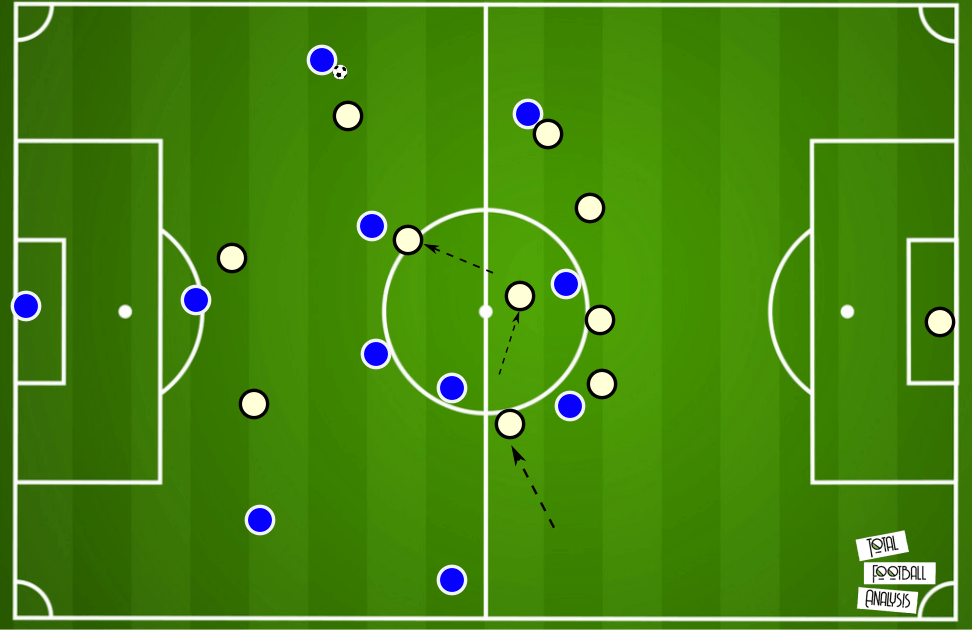
Otherwise the centre-backs are given the freedom to drop into this area.
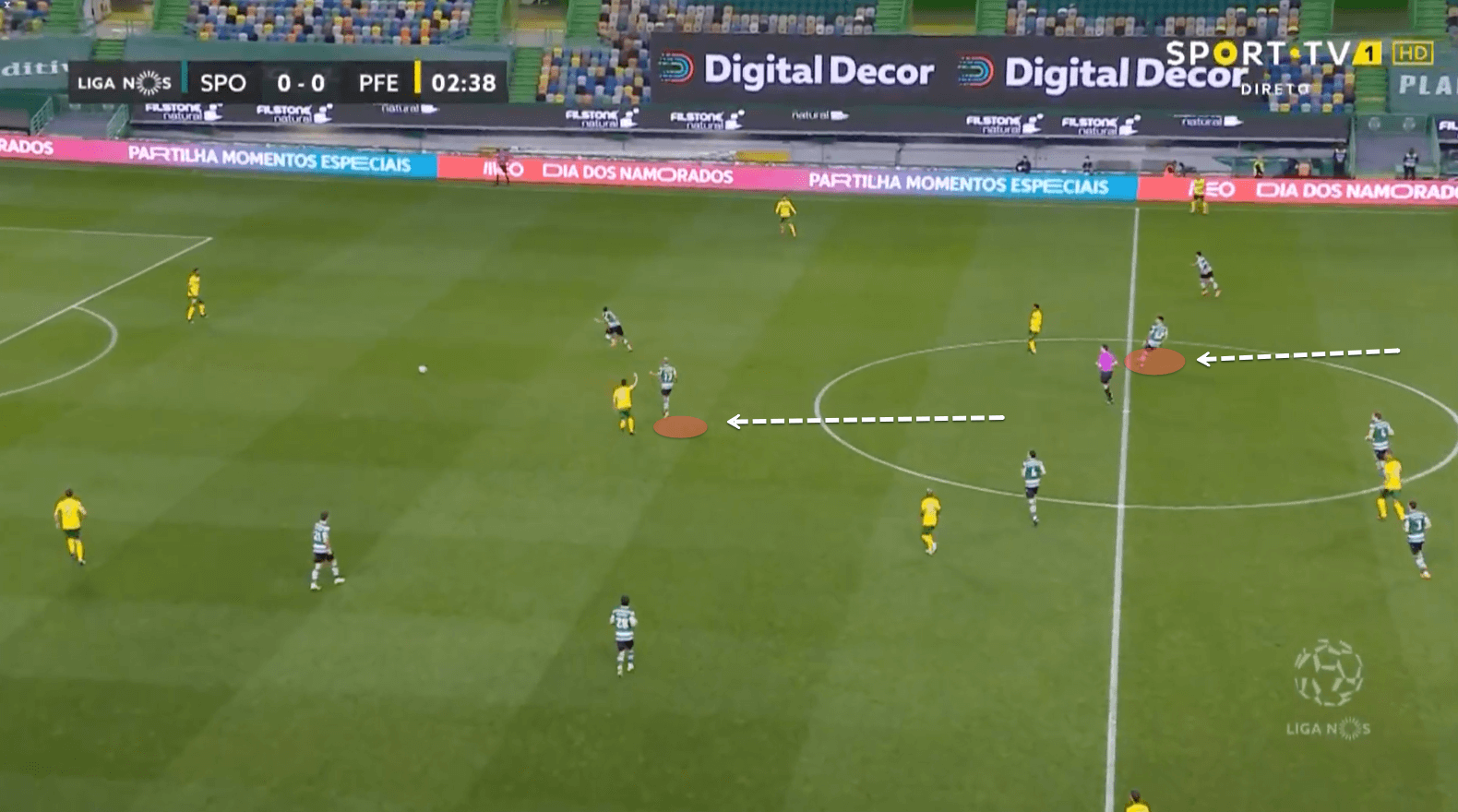
As alluded to in the introduction, Sporting have a fluid defensive shape and are more concerned with protecting specific spaces.
There aren’t necessarily players assigned to roles.
Just as either of the pivots might drop in to fill the pivot space, the forwards will, too.
In the following image, as the ball is worked wide, Sporting’s centre forward sees that the Portimonense pivot is shifting across and in space.
With both of Sporting’s pivots unable to cover this space, he is able to drop in and cover.
In doing so, Sporting continues to prevent an easy way out as the Portimonense right-winger has possession on the flank.
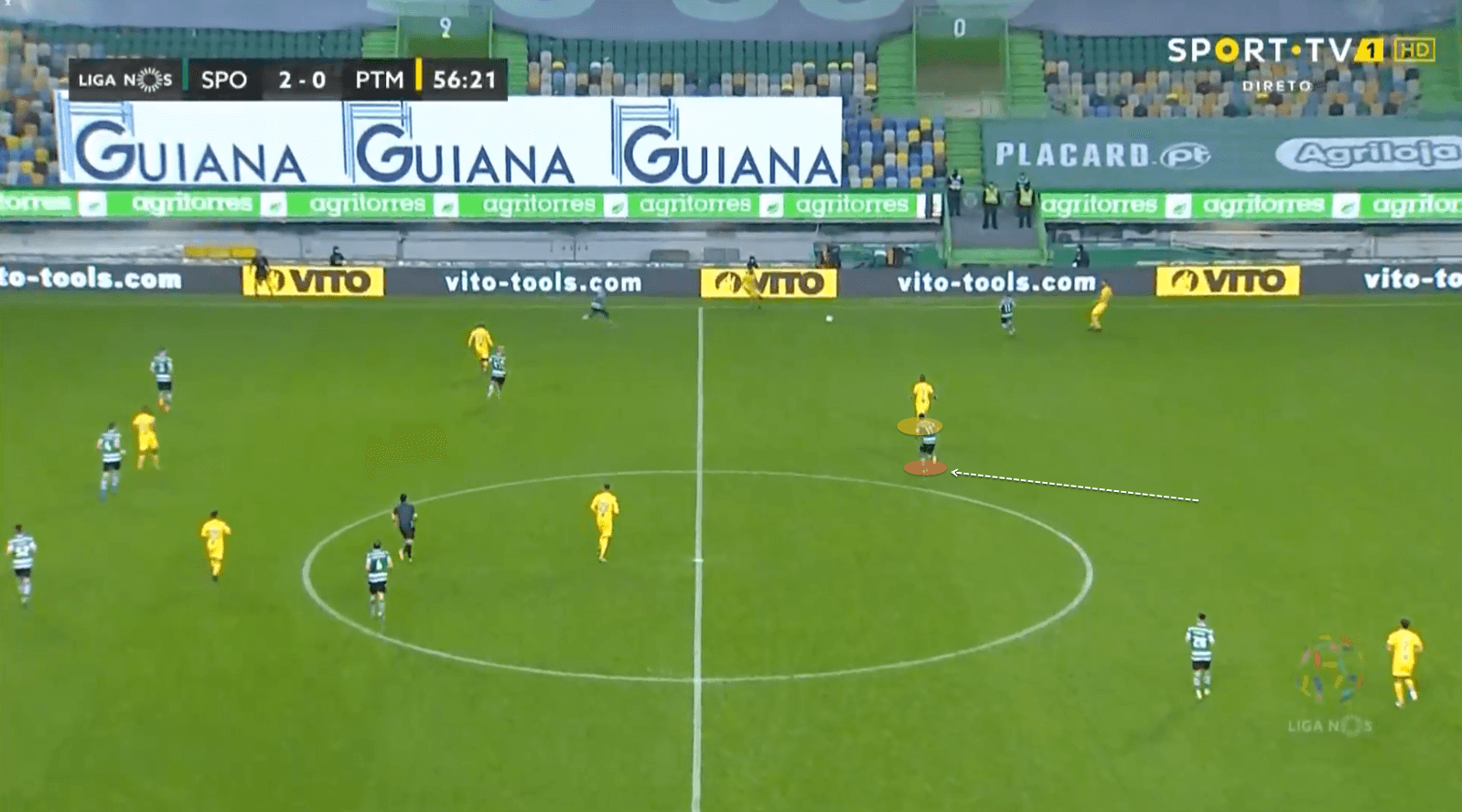
Similarly, any of the wide forwards can drop in to pick up the pivot, allowing Sporting’s own central midfielders to remain in position.
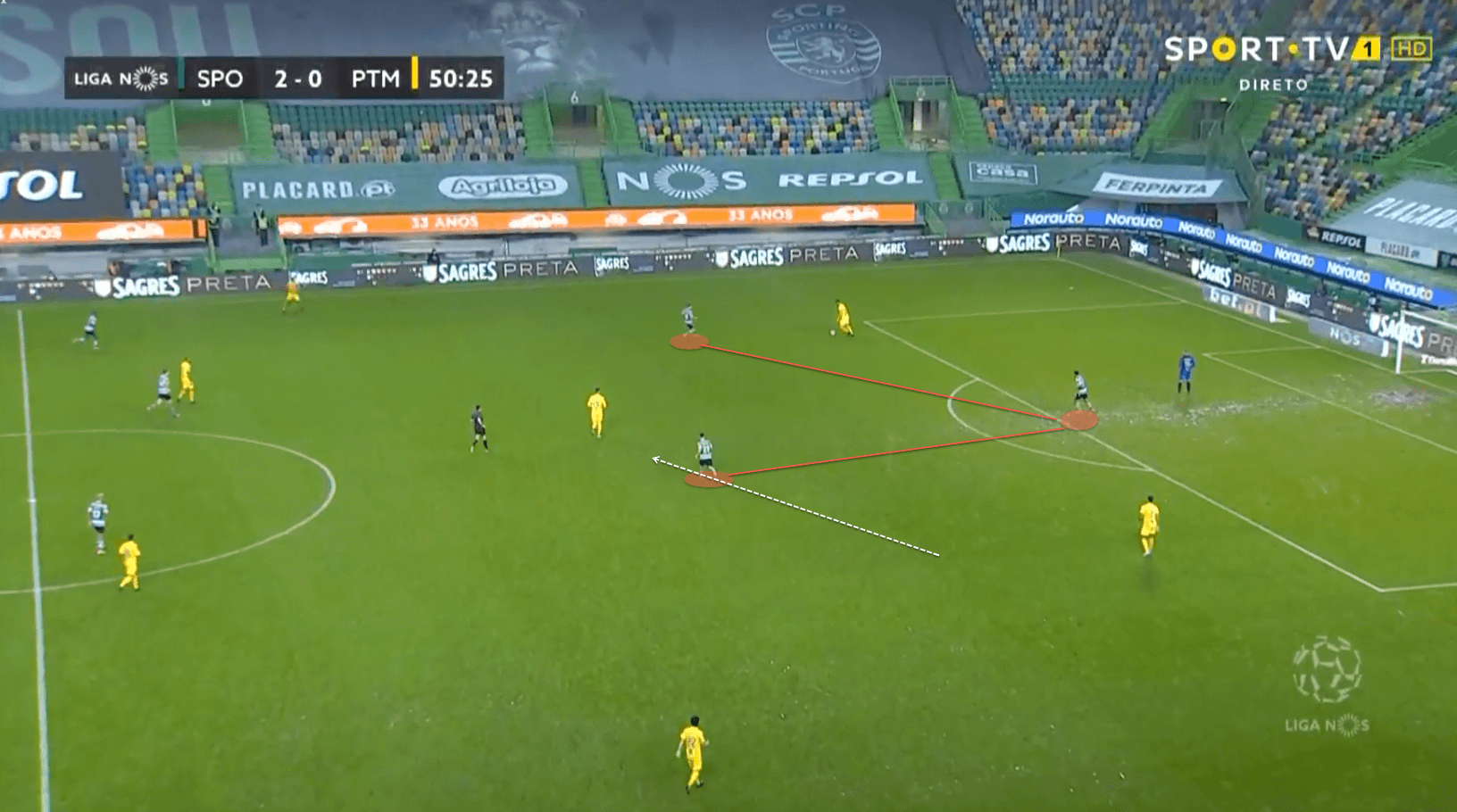
No passes in behind
Unless the opponent has a player floating beyond Sporting’s first line of press, there’s no need to play with anyone in this space, and Sporting will happily play with a very reserved shape behind this front three.
As we can see in this image, the front three man-mark the opposition back three and, therefore, force the opposition to play long.
With the opponent’s two wide players hugging each touchline, Sporting has a 7 v 5 overload in the centre of the pitch on the halfway line. They have the upper hand in the aerial duel and the immediate loose ball duel afterwards.
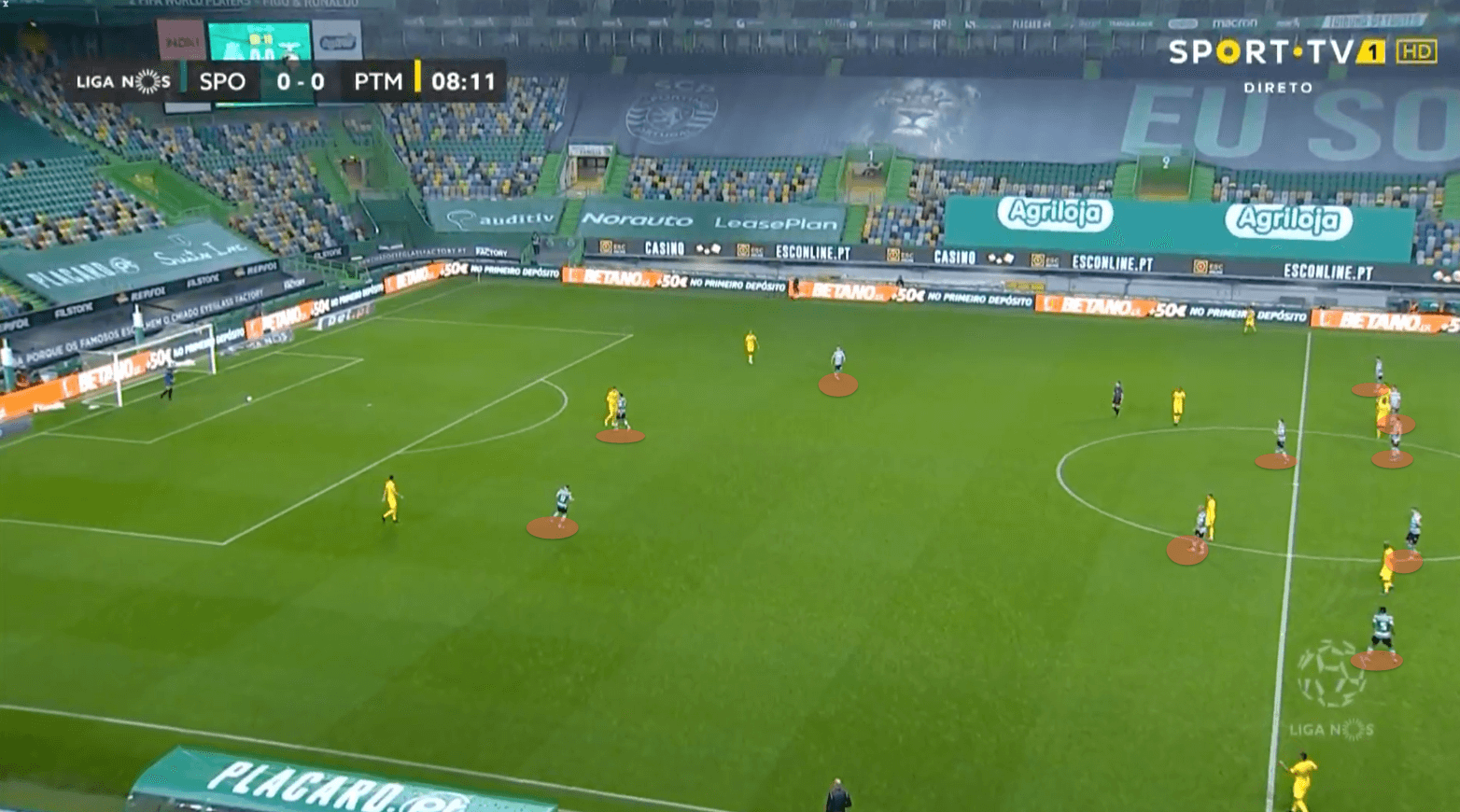
Whilst their wing-backs will press the wide areas, they stay deep and compact until that pass is played.
The aggressive press of their front three and the mobility of the double pivot push the opponent to play long or play wide.
If it goes wide, we have seen how they shut off any passing options, and if they go long, these five have the upper hand.
Their ability to cover the width of the pitch also prevents any through-pass that isn’t an aerial ball.
If the opponent does break through the press in a central area, the immediate pressure from the centre from one of the pivots, and Sporting’s back five covering any potential gaps for a quick pass in behind, makes it very difficult for them to be broken down.
Conclusion
Rúben Amorim style of play shows that if a front three works well together as a unit and maintains an intense press, then wingers or significant numbers in central midfield aren’t necessarily important in a defensive system.
Sporting, instead, knows they can force opponents into areas of the pitch where they can significantly reduce their chances of building up in a way that the opposition has planned.
They can lead them into wide areas where they shut off any potential passing options and either turnover possession or force the opponent to play long.

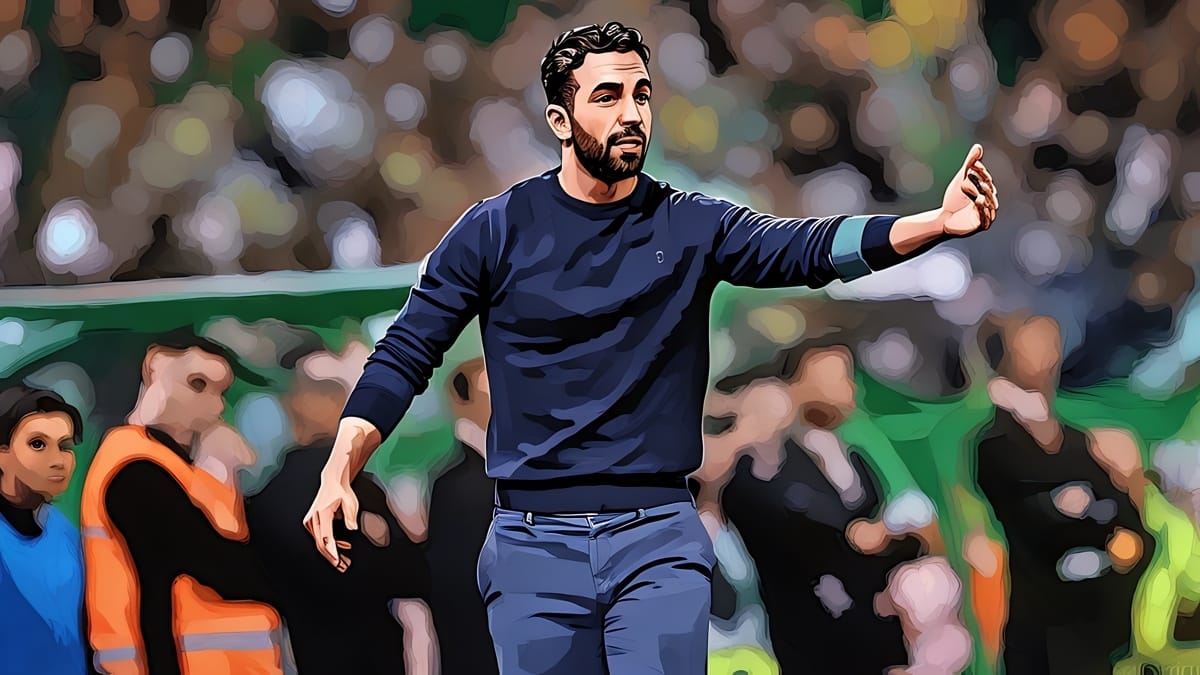



Comments